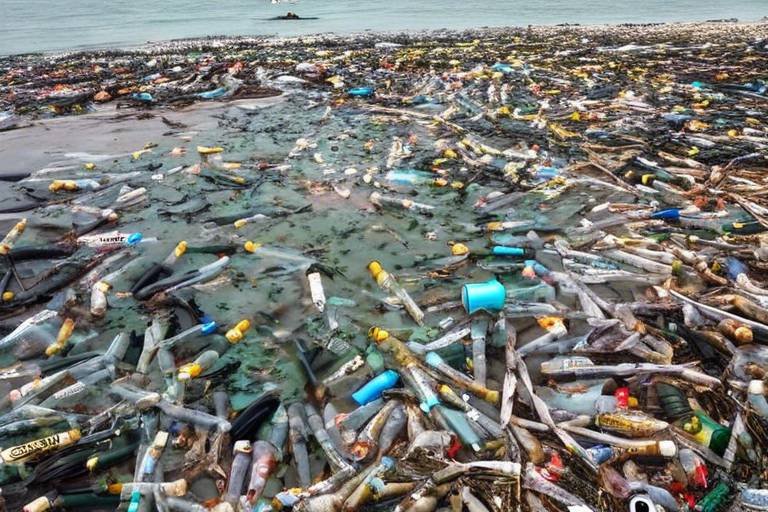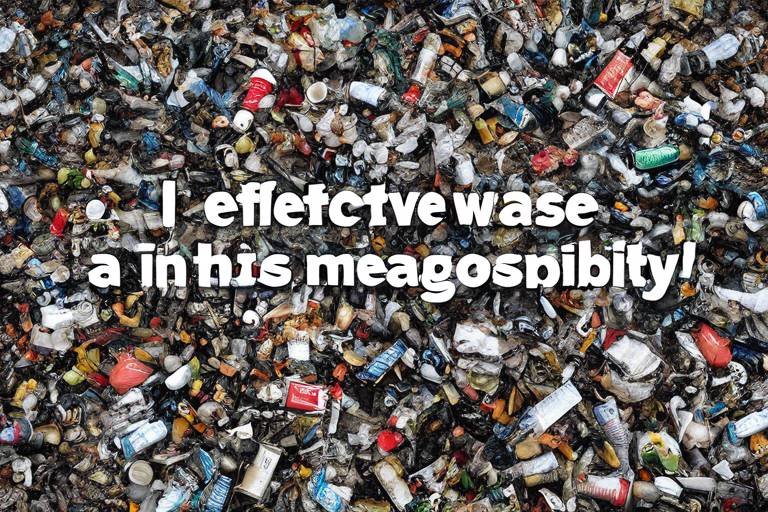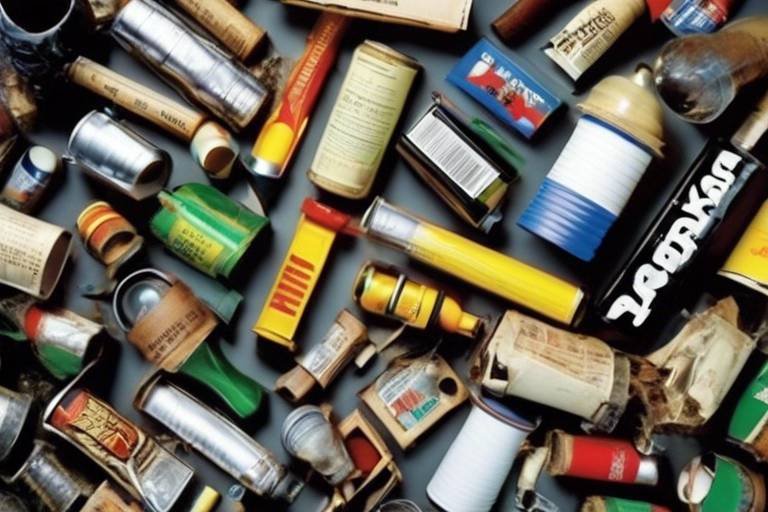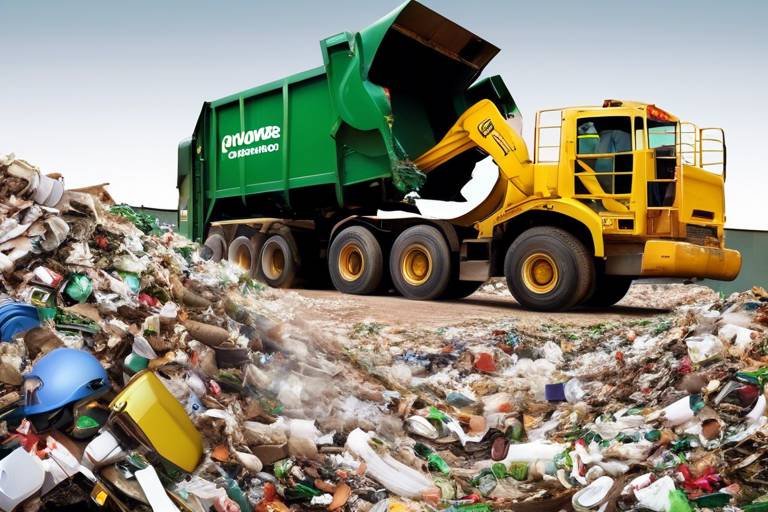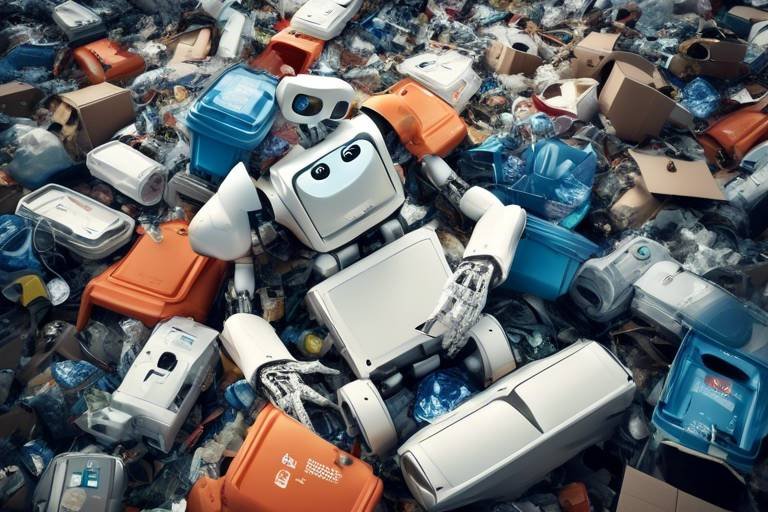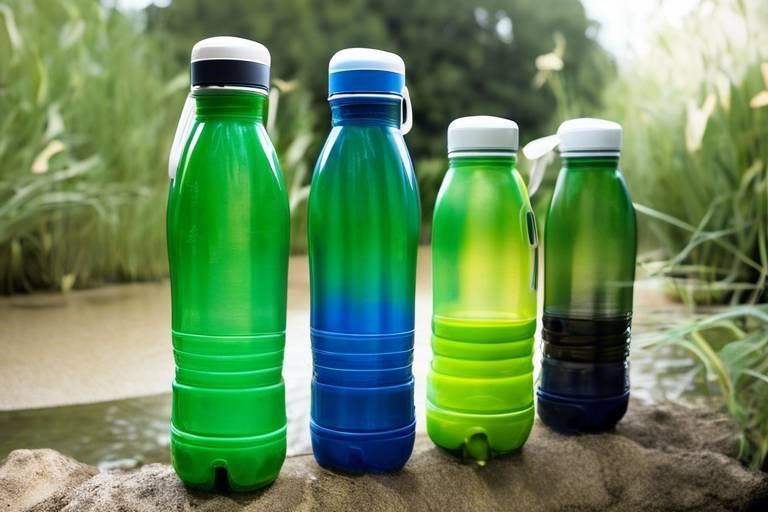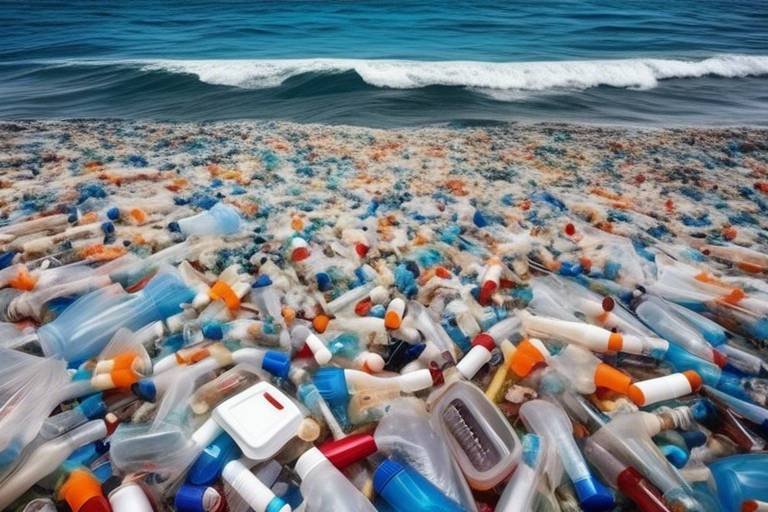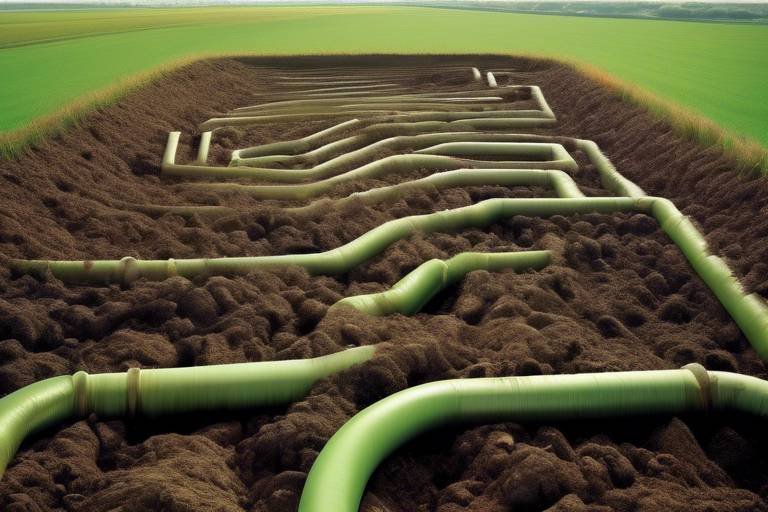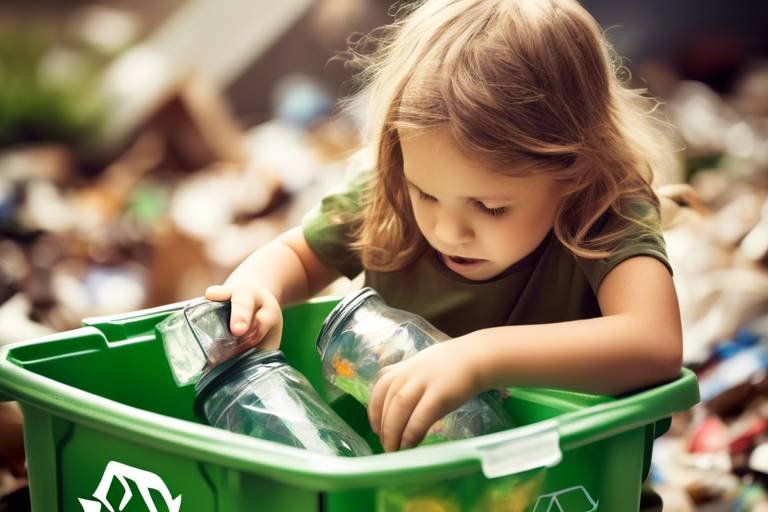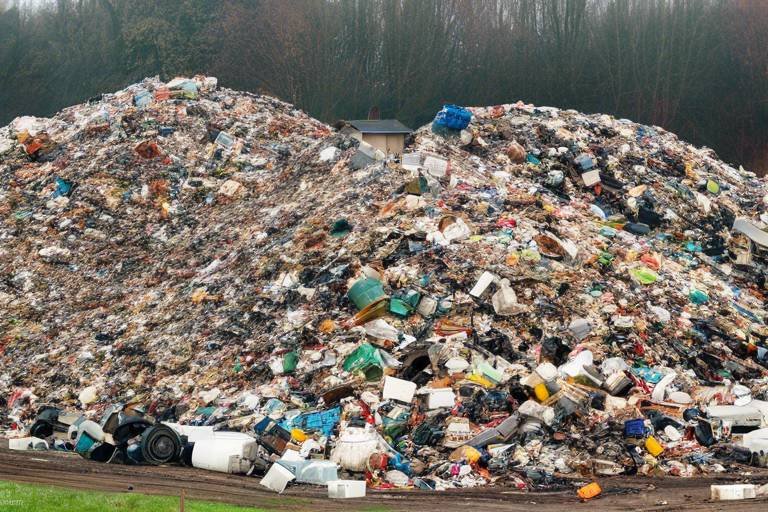What are the Implications of Marine Pollution?
Marine pollution is not just an environmental issue; it's a complex web of interconnected problems that affect our planet's health, our economies, and even our personal well-being. Imagine the vast oceans, teeming with life, suddenly choked by plastic waste, chemicals, and other pollutants. This scenario is not a distant threat; it's our current reality. The implications of marine pollution stretch far and wide, touching on environmental degradation, economic losses, and serious health risks for humans and wildlife alike.
The oceans cover over 70% of our planet's surface, and they play a crucial role in regulating the Earth's climate and supporting a myriad of ecosystems. However, when we dump waste into these waters, we don't just affect fish and marine mammals; we disrupt entire food chains and ecosystems. This pollution comes in many forms, from plastic debris and heavy metals to nutrient runoff that leads to harmful algal blooms. Each of these pollutants has its own set of consequences, making it essential to understand how they interact with marine life and, ultimately, with us.
On the economic front, marine pollution has far-reaching consequences that can impact local and global markets. Industries such as fishing and tourism are particularly vulnerable. For instance, when fish populations decline due to pollution, not only do fishermen suffer, but so do the communities that rely on these resources for their livelihoods. Similarly, polluted beaches deter tourists, leading to significant losses for businesses that thrive on coastal tourism. It's a vicious cycle that affects everyone, from the fishermen casting their nets to the families vacationing by the sea.
Moreover, the health implications of marine pollution cannot be overlooked. When we consume seafood contaminated with toxins, we expose ourselves to a range of health risks, including neurological disorders and reproductive issues. The very waters we swim in can harbor harmful pathogens, turning a day at the beach into a potential health hazard. The stakes are high, and the need for action is urgent.
In summary, the implications of marine pollution are profound and multifaceted. They touch on environmental, economic, and health aspects that are all interconnected. As we continue to face this global challenge, it's crucial to advocate for sustainable practices and policies that can help mitigate these impacts. The ocean is not just a resource; it's a vital component of our planet's health and our own survival.
- What are the main causes of marine pollution? Marine pollution is primarily caused by human activities such as industrial waste disposal, agricultural runoff, plastic waste, and oil spills.
- How does marine pollution affect marine life? Marine pollution can lead to habitat degradation, loss of biodiversity, and health issues in marine organisms, which can disrupt entire ecosystems.
- What can individuals do to reduce marine pollution? Individuals can reduce marine pollution by minimizing plastic use, participating in beach clean-ups, and advocating for policies that protect marine environments.
- Are there any laws regulating marine pollution? Yes, many countries have laws and regulations aimed at reducing marine pollution, such as the Clean Water Act in the United States and the Marine Strategy Framework Directive in the European Union.

Environmental Impact
Marine pollution is like a silent thief, stealthily robbing our oceans of their vitality and health. The implications are profound and far-reaching, affecting not just the water but the entire ecosystem that relies on it. When pollutants enter marine environments, they disrupt the delicate balance of life, leading to a cascade of negative effects. One of the most alarming consequences is the loss of biodiversity. Imagine a vibrant underwater world teeming with life – colorful fish darting among coral reefs, sea turtles gliding gracefully, and dolphins playing in the waves. Now, picture that world slowly fading away due to pollution. This stark reality is what many marine ecosystems face today.
Habitat degradation is another severe consequence of marine pollution. Pollutants such as plastics, chemicals, and heavy metals accumulate in the environment, leading to the destruction of critical habitats like coral reefs, mangroves, and seagrass beds. These habitats are not just beautiful; they are essential for countless marine species, providing shelter, breeding grounds, and food sources. Without these habitats, many species struggle to survive, leading to a decline in populations and, ultimately, extinction.
Furthermore, the introduction of invasive species, often facilitated by human activities, exacerbates the situation. These invaders can outcompete native species for resources, further diminishing biodiversity. The combination of habitat loss, pollution, and invasive species creates a perfect storm for marine ecosystems, pushing them closer to the brink of collapse.
To illustrate the extent of marine pollution's impact, consider the following table that summarizes key pollutants and their effects on marine life:
| Type of Pollutant | Effects on Marine Life |
|---|---|
| Plastics | Entanglement, ingestion, habitat destruction |
| Chemical Pollutants | Toxicity, bioaccumulation, reproductive issues |
| Nutrient Runoff | Eutrophication, harmful algal blooms |
| Heavy Metals | Neurological damage, weakened immune systems |
Understanding these environmental consequences is crucial for developing effective conservation strategies. It’s not just about saving the fish or the coral; it’s about preserving the intricate web of life that supports our planet. Every creature, no matter how small, plays a vital role in maintaining the health of marine ecosystems. By protecting these environments, we are also safeguarding our future.
In conclusion, the implications of marine pollution extend beyond the immediate damage to the ocean. They ripple through the entire ecosystem, affecting biodiversity, habitat integrity, and the overall health of our planet. Addressing these challenges requires a collective effort to mitigate pollution and restore marine environments. Only then can we hope to preserve the beauty and richness of our oceans for generations to come.
- What are the main sources of marine pollution? Marine pollution primarily comes from land-based sources such as agricultural runoff, industrial discharges, and plastic waste.
- How does marine pollution affect human health? Polluted waters can lead to the consumption of contaminated seafood, which poses serious health risks, including exposure to toxins and pathogens.
- What can individuals do to reduce marine pollution? Individuals can help by reducing plastic use, participating in beach clean-ups, and supporting policies aimed at protecting marine environments.
- Are there any successful initiatives to combat marine pollution? Yes, many organizations and governments are implementing strategies such as stricter regulations on waste disposal and promoting sustainable fishing practices.

Economic Consequences
The economic implications of marine pollution are profound and far-reaching, affecting not only the environment but also the livelihoods of millions of people. When we think about the ocean, we often picture it as a vast, beautiful expanse teeming with life. However, this image is increasingly marred by pollution, which has dire consequences for industries that rely on marine resources. From fishing to tourism, the ripple effects of pollution can be catastrophic, leading to a chain reaction that impacts communities and economies worldwide.
One of the most affected sectors is fishing. As pollution enters the water, it can lead to declining fish populations, which poses a serious threat to both commercial and subsistence fisheries. Imagine a fisherman who has spent his life on the water, only to find that his catch is dwindling due to contaminated habitats. This not only jeopardizes his livelihood but also threatens food security for families that depend on fish as a primary source of nutrition. The implications extend beyond individual fishermen; entire communities can suffer when the local economy relies heavily on fishing.
To illustrate the economic impact, consider the following table that outlines the effects of marine pollution on fisheries:
| Impact | Description |
|---|---|
| Decline in Fish Stocks | Overfishing and pollution lead to fewer fish available for catch, affecting supply and prices. |
| Job Losses | As fish populations decline, jobs in fishing and related industries are at risk. |
| Increased Costs | Fishermen may incur higher costs due to the need to travel farther for fish, reducing profits. |
Moreover, tourism is another critical industry that suffers from marine pollution. Coastal areas that thrive on tourism depend on clean beaches and vibrant marine ecosystems to attract visitors. When pollution tarnishes these natural wonders, it can lead to a significant drop in tourist numbers. Picture a sunny beach that once bustled with families and sunbathers, now marred by litter and murky waters. This not only diminishes the experience for tourists but also results in lost revenue for local businesses, from hotels to restaurants.
The economic consequences of marine pollution are not just limited to direct impacts on fishing and tourism. They also extend to public health costs associated with contaminated seafood and polluted waters. Communities may face increased healthcare expenses as illnesses related to pollution rise. This creates a vicious cycle where economic strain leads to inadequate health resources, further exacerbating the problem.
In summary, the economic consequences of marine pollution are extensive and multifaceted. The interconnectedness of our oceans with our economies means that when pollution strikes, the repercussions are felt far and wide. It is imperative that we take action to mitigate these impacts, ensuring that our oceans remain a source of life and livelihood for generations to come. Sustainable practices and community engagement are crucial to reversing the tide of pollution and restoring the health of our marine environments.
- What are the main sources of marine pollution? Marine pollution primarily comes from industrial discharge, agricultural runoff, plastic waste, and oil spills.
- How does marine pollution affect human health? Polluted waters can lead to foodborne illnesses, exposure to toxins, and long-term health issues from contaminated seafood.
- What can individuals do to help reduce marine pollution? Individuals can reduce their plastic use, participate in beach clean-ups, and support policies aimed at protecting marine environments.
- Are there any successful initiatives to combat marine pollution? Yes, various organizations and governments have implemented successful programs focused on reducing plastic waste and restoring marine habitats.

Impact on Fisheries
Marine pollution is not just an environmental issue; it has profound effects on fisheries worldwide. The health of our oceans is intricately linked to the livelihoods of millions who depend on fishing for their sustenance and income. As pollution levels rise, fish populations decline, leading to a ripple effect that impacts food security and economic stability in coastal communities. Imagine a fisherman setting out to sea, hoping to catch enough fish to feed his family, only to find that the waters are barren due to pollution. This stark reality is becoming increasingly common.
Contaminated waters pose a significant threat to both commercial and subsistence fisheries. Many fish species are sensitive to pollutants such as heavy metals, plastics, and chemicals, which can accumulate in their bodies and disrupt their reproductive systems. When fish populations dwindle, it not only affects the fishermen but also the entire ecosystem that relies on those fish for survival. The decline in fish stocks can be attributed to several factors, including:
- Overfishing: When fish are caught faster than they can reproduce, populations decline.
- Pollution: Contaminants in the water can lead to lower fish populations and affect their health.
- Habitat Destruction: Pollution can damage critical habitats such as coral reefs and mangroves, which are essential for breeding.
As a result, communities that rely on fishing face economic hardships. The loss of fish not only impacts the fishermen but also the entire supply chain, including fish markets, restaurants, and exporters. A study by the World Bank found that the global economic loss from declining fish stocks due to pollution and overfishing could reach billions of dollars annually. This is a wake-up call for us to consider sustainable practices in our fishing industries.
Moreover, the health risks associated with consuming contaminated seafood cannot be overlooked. Fish that inhabit polluted waters may carry toxins that can lead to serious health issues in humans. The potential for mercury and other chemical contaminants to enter the food chain is alarming. Therefore, it is crucial for consumers to be aware of where their seafood comes from and for regulatory bodies to enforce strict safety standards.
In conclusion, the impact of marine pollution on fisheries is a complex issue that intertwines environmental health, economic stability, and human safety. To safeguard our oceans and the communities that depend on them, we must advocate for sustainable fishing practices and stricter pollution controls. Only then can we ensure that future generations enjoy the bounty of our seas.

Decline in Fish Stocks
The decline in fish stocks is a pressing issue that intertwines the threads of environmental degradation and economic instability. Overfishing, coupled with the insidious effects of marine pollution, has led to a significant reduction in fish populations worldwide. Imagine a once-thriving underwater city, now dwindling in its vibrancy, with fewer fish swimming through the coral reefs. This decline not only affects the aquatic ecosystem but also ripples through the livelihoods of countless individuals who depend on fishing for their survival.
One of the primary causes of this decline is the accumulation of pollutants in our oceans. Heavy metals, microplastics, and chemical runoff from agricultural practices enter marine environments, creating a toxic cocktail that fish cannot escape. These contaminants weaken fish populations, making them more susceptible to diseases and reducing their reproductive capabilities. The cycle continues as the health of marine ecosystems deteriorates, leading to a diminished capacity for fish populations to recover.
Moreover, the economic ramifications of declining fish stocks are staggering. Communities that rely on fishing as their primary source of income find themselves grappling with uncertainty and hardship. For instance, small-scale fishers, who often lack the resources to adapt to changing conditions, face the brunt of this crisis. As fish become scarcer, prices soar, making it difficult for consumers to afford seafood. This not only impacts local economies but also threatens food security, especially in regions where fish is a staple protein source.
To illustrate the severity of this issue, consider the following table that highlights the global decline in fish stocks over the past few decades:
| Year | Percentage of Overfished Stocks |
|---|---|
| 1974 | 10% |
| 1994 | 25% |
| 2015 | 33% |
| 2023 | 40% |
This table starkly illustrates the increasing trend of overfished stocks, emphasizing the urgent need for sustainable fishing practices. If we continue down this path without intervention, we risk not only losing valuable marine species but also the cultural and economic fabric of communities that depend on them.
In conclusion, addressing the decline in fish stocks is not merely an environmental concern; it’s a matter of economic survival and food security for millions around the globe. By adopting sustainable practices, enforcing stricter regulations, and raising awareness about the impacts of pollution, we can work towards restoring our oceans and ensuring that future generations can enjoy the bounty of our seas.
- What are the main causes of the decline in fish stocks? The primary causes include overfishing, marine pollution, habitat destruction, and climate change.
- How does marine pollution affect fish populations? Pollutants can weaken fish, reduce reproductive rates, and lead to increased mortality, significantly impacting population numbers.
- What can be done to mitigate the decline in fish stocks? Implementing sustainable fishing practices, reducing pollution, and enforcing protective regulations are crucial steps.
- Why is the decline in fish stocks a concern for food security? Many communities depend on fish as a primary protein source; declining stocks can lead to increased prices and decreased access to food.

Health Risks for Consumers
When it comes to marine pollution, one of the most alarming implications is the health risks it poses to consumers. Imagine enjoying a delicious seafood dinner, only to find out that the fish on your plate is contaminated with harmful substances. This scenario is becoming increasingly common as pollutants find their way into our oceans, impacting the very creatures we rely on for sustenance.
Contaminated seafood can carry a myriad of health threats, primarily due to the accumulation of toxic chemicals and pathogens in marine life. For instance, heavy metals such as mercury and lead can build up in fish tissues over time, leading to serious health issues for those who consume them. The risks are not just theoretical; studies have shown that high levels of mercury can lead to neurological problems, particularly in pregnant women and young children. It’s a sobering thought, isn’t it?
Moreover, the presence of microplastics in our oceans has raised significant concerns. These tiny plastic particles are ingested by marine creatures, and as they move up the food chain, they can end up on our dinner plates. The long-term effects of consuming microplastics are still being studied, but early research suggests potential links to various health problems, including inflammation and reproductive issues. The idea of tiny pieces of plastic mingling with our food is enough to make anyone reconsider their seafood choices.
Additionally, pathogens from polluted waters can enter the human food chain, leading to serious illnesses. When recreational activities like swimming or fishing occur in contaminated waters, there’s a risk of exposure to harmful bacteria and viruses. For example, vibrio bacteria, commonly found in warm coastal waters, can cause severe gastrointestinal illness. This is particularly concerning for those who consume raw or undercooked seafood, as the pathogens can easily transfer from the environment to the plate.
To put it simply, the health risks associated with consuming polluted marine life are multifaceted and alarming. It’s not just about the immediate effects; the long-term health implications can be devastating. As consumers, it’s crucial to stay informed about where our seafood comes from and the conditions in which it is sourced. Here are some key points to consider:
- Be aware of seafood advisories: Local health departments often issue advisories regarding fish consumption from certain waters.
- Choose sustainably sourced seafood: Opt for fish that are caught or farmed in clean, monitored environments.
- Stay informed about contamination levels: Pay attention to reports on pollutants in marine ecosystems, especially if you live near coastal areas.
In conclusion, the health risks associated with marine pollution are significant and should not be taken lightly. As consumers, we have the power to make informed choices that can help mitigate these risks. By prioritizing clean, sustainable seafood, we not only protect our health but also contribute to the overall health of our oceans. After all, a healthy ocean leads to healthy seafood, which in turn leads to healthier consumers.
Q: What are the main pollutants affecting marine life?
A: The primary pollutants include heavy metals (like mercury and lead), plastics (microplastics), and various chemical contaminants from industrial runoff.
Q: How can I ensure the seafood I consume is safe?
A: Look for seafood that has been certified as sustainable and check local advisories for any warnings about specific waters.
Q: What health issues can arise from consuming contaminated seafood?
A: Potential health issues include neurological problems from heavy metals, gastrointestinal illnesses from pathogens, and long-term effects from microplastics.
Q: Are there regulations in place to prevent marine pollution?
A: Yes, various regulations exist at local, national, and international levels aimed at reducing pollution and protecting marine ecosystems, although enforcement varies.

Tourism and Recreation
Marine pollution has a profound impact on tourism and recreational activities, which are vital for many coastal communities. Picture this: a beautiful beach, golden sands, and crystal-clear waters. Now imagine that same beach littered with plastic, oil spills, and other contaminants. It's not just an eyesore; it’s a deterrent for tourists. When marine environments are polluted, they lose their charm, and with it, the influx of visitors that local economies rely on. The ripple effect of this decline can be devastating, leading to job losses in sectors that depend on tourism, such as hospitality, retail, and recreational services.
Coastal tourism thrives on the allure of pristine beaches and vibrant marine life. However, when pollution takes center stage, it can lead to the closure of popular beaches, which not only frustrates tourists but also significantly impacts local businesses. For instance, a study showed that over 60% of tourists consider cleanliness as a top priority when choosing a destination. If a beach is polluted, it’s likely to end up on the list of places to avoid.
Moreover, recreational activities such as snorkeling, diving, and fishing are heavily influenced by the health of marine ecosystems. Tourists flock to destinations to experience the underwater beauty, but pollution can lead to coral bleaching and fish die-offs. As a result, the once-thriving marine habitats become ghost towns, deterring visitors who seek adventure and natural beauty. The financial implications are staggering. According to recent data, marine tourism generates over $40 billion annually in the United States alone, and a significant portion of that comes from activities that are directly impacted by marine pollution.
To illustrate the economic repercussions further, let's take a look at the following table:
| Type of Activity | Impact of Pollution | Potential Economic Loss |
|---|---|---|
| Snorkeling and Diving | Coral bleaching and loss of marine life | $10 billion |
| Fishing | Decline in fish populations and health risks | $20 billion |
| Beach Tourism | Closure of beaches due to pollution | $15 billion |
As the table indicates, the financial stakes are high. The tourism industry is not just about bringing in visitors; it’s about creating sustainable practices that protect the environment. Coastal communities must advocate for cleaner beaches and healthier oceans to ensure that they can continue to attract tourists and maintain their livelihoods.
In conclusion, the implications of marine pollution extend far beyond environmental degradation. They seep into the economic fabric of coastal communities, affecting jobs, local businesses, and the overall quality of life. It's essential for both tourists and locals to understand the importance of preserving our oceans and beaches. After all, a clean beach is not just a destination; it's a lifeline for many communities. As we move forward, we must prioritize sustainable tourism practices that respect and protect our marine environments.
- What are the main causes of marine pollution? Marine pollution is primarily caused by plastic waste, oil spills, agricultural runoff, and untreated sewage.
- How does marine pollution affect tourism? Pollution can deter tourists, lead to beach closures, and negatively impact recreational activities, causing significant economic losses.
- What can be done to reduce marine pollution? Implementing stricter regulations, promoting sustainable practices, and increasing public awareness can help mitigate marine pollution.
- Are there health risks associated with marine pollution? Yes, polluted waters can harbor harmful pathogens and chemical contaminants that pose serious health risks to humans.

Human Health Effects
Marine pollution is not just an environmental issue; it’s a pressing public health crisis that affects millions of people globally. When we think about the ocean, we often envision pristine waters and vibrant marine life, but the reality is starkly different. Contaminated waters can harbor a cocktail of harmful substances, including toxins and pathogens, which pose serious risks to human health. Have you ever considered how the fish you eat or the water you swim in could impact your well-being? It's a sobering thought, but one that we must confront.
One of the most alarming aspects of marine pollution is the exposure to pathogens. These harmful microorganisms thrive in polluted waters, leading to a variety of waterborne diseases. Imagine taking a refreshing dip in the ocean, only to find out later that the water was teeming with bacteria or viruses. This is a reality for many beachgoers around the world. According to recent studies, areas with high levels of pollution have seen a spike in illnesses such as gastroenteritis and hepatitis A. The risk is especially pronounced for vulnerable populations, including children and the elderly, who may have weaker immune systems.
Another critical concern is the presence of chemical contaminants in marine environments. Heavy metals, such as mercury and lead, along with microplastics, can accumulate in marine life, eventually making their way into the human food chain. Consuming contaminated seafood can lead to serious health issues, including neurological disorders and developmental problems in children. In fact, the World Health Organization has linked long-term exposure to these contaminants with various health complications. The question arises: how can we ensure the seafood we consume is safe?
To address these concerns, it’s essential to implement robust monitoring systems for water quality and seafood safety. Governments and organizations must work together to establish strict regulations on pollution and promote public awareness campaigns about the risks associated with consuming contaminated marine life. Here are a few key strategies:
- Regular Testing: Conduct regular tests of water bodies and seafood to detect harmful substances.
- Public Education: Educate communities about the risks of marine pollution and safe seafood consumption.
- Policy Enforcement: Enforce stricter regulations on industrial discharges and waste management.
As we delve deeper into the implications of marine pollution, it becomes increasingly clear that the health of our oceans directly correlates with our health. By taking proactive measures and raising awareness, we can protect ourselves and future generations from the dangers lurking beneath the waves.
- What are the main health risks associated with marine pollution? Marine pollution can lead to waterborne diseases and exposure to harmful chemicals that can affect human health.
- How can I ensure the seafood I consume is safe? Look for seafood that has been tested for contaminants and sourced from clean waters.
- What measures can communities take to reduce marine pollution? Communities can engage in clean-up efforts, advocate for better waste management practices, and support policies aimed at reducing pollution.

Pathogen Exposure
When we think about marine pollution, we often picture plastic bottles and oil spills, but there's another silent threat lurking beneath the waves: pathogens. Polluted waters can become breeding grounds for harmful microbes, which can pose serious health risks to anyone who comes into contact with them. Imagine heading out for a day of fun at the beach, only to find that the water is teeming with bacteria and viruses that could lead to severe illness. This scenario isn't just a hypothetical; it's a growing reality in many coastal areas around the world.
Pathogen exposure primarily occurs through recreational activities such as swimming, surfing, and even fishing. When people wade into contaminated waters, they risk ingesting or absorbing harmful organisms that can lead to waterborne diseases. Common pathogens include bacteria like Escherichia coli and viruses such as norovirus. These microorganisms can cause a range of illnesses, from mild gastrointestinal distress to severe infections that require hospitalization.
Furthermore, the presence of pathogens in marine environments can be exacerbated by factors such as urban runoff, sewage discharge, and agricultural practices that introduce excess nutrients into the water. This nutrient overload can lead to harmful algal blooms, which not only deplete oxygen levels in the water but also produce toxins that can further compromise human health. The interplay between pollution and pathogen proliferation is a complex issue that necessitates a comprehensive understanding of marine ecosystems.
To illustrate the severity of pathogen exposure, consider the following table that summarizes common waterborne diseases associated with polluted marine environments:
| Disease | Pathogen | Symptoms | Transmission |
|---|---|---|---|
| Gastroenteritis | Norovirus | Diarrhea, vomiting, stomach cramps | Ingestion of contaminated water |
| Hepatitis A | Hepatitis A virus | Fatigue, nausea, jaundice | Ingestion of contaminated food/water |
| Swimmer's Ear | Pseudomonas aeruginosa | Itching, redness, discharge from the ear | Direct contact with contaminated water |
In light of these risks, it's essential for communities to implement effective monitoring programs to ensure water quality and public safety. Regular testing of recreational waters can help identify contamination events before they escalate into public health crises. Additionally, educating the public about the risks associated with swimming in polluted waters can empower individuals to make informed decisions about their health.
Ultimately, addressing pathogen exposure in marine environments requires a collaborative effort among governments, environmental organizations, and local communities. By raising awareness and advocating for cleaner water practices, we can protect not only our oceans but also the health and well-being of those who depend on these vital ecosystems.
- What are some common symptoms of waterborne diseases? Symptoms can range from gastrointestinal issues like diarrhea and vomiting to more severe conditions such as jaundice and fatigue.
- How can I protect myself from pathogen exposure while swimming? It's best to avoid swimming in waters that have been reported to be contaminated, especially after heavy rainfall or near sewage discharge points.
- Are all beaches tested for water quality? Not all beaches have regular testing, so it's important to check local health department advisories before heading out.

Chemical Contaminants
Chemical pollutants in our oceans are more than just a minor inconvenience; they are a significant threat to both marine life and human health. These contaminants, which include heavy metals, pesticides, and microplastics, find their way into the marine environment through various pathways, such as industrial runoff, agricultural practices, and improper waste disposal. Once in the ocean, these substances can accumulate in the food chain, leading to severe health implications for both marine species and humans who consume seafood.
Heavy metals like mercury and lead are particularly concerning. They can cause neurological damage and other serious health issues in humans, especially in vulnerable populations such as pregnant women and young children. The process of bioaccumulation means that as smaller fish ingest these metals, they become more concentrated in larger fish, which are then caught and consumed by people. This chain reaction not only threatens the health of marine ecosystems but also poses a direct risk to our health.
Microplastics, tiny plastic particles less than 5mm in size, are another alarming aspect of marine pollution. They originate from various sources, including the breakdown of larger plastic items and synthetic fibers from clothing. Once in the ocean, these microplastics can be ingested by marine animals, leading to physical harm and potential toxicity. Studies have shown that microplastics can carry harmful chemicals, further compounding their danger. The ingestion of these particles can lead to digestive issues in marine life and, ultimately, affect the humans who consume these contaminated species.
It’s crucial to understand the long-term effects of these chemical contaminants. The health implications can be profound, leading to chronic diseases and increased healthcare costs. Below is a table summarizing some of the common chemical contaminants found in marine environments and their potential health effects:
| Chemical Contaminant | Source | Health Effects |
|---|---|---|
| Heavy Metals (e.g., Mercury) | Industrial discharge, mining | Neurological damage, developmental issues |
| Pesticides | Agricultural runoff | Endocrine disruption, cancer risk |
| Microplastics | Breakdown of plastics, synthetic fibers | Digestive issues, potential toxicity |
To combat the effects of these chemical contaminants, it is essential to implement strict regulations, enhance monitoring of marine environments, and promote public awareness about the importance of reducing plastic use and proper waste disposal. By taking proactive steps, we can protect our oceans and, in turn, safeguard our health.
- What are the main sources of chemical contaminants in the ocean?
The primary sources include industrial runoff, agricultural practices, and improper waste disposal.
- How do heavy metals affect human health?
Heavy metals can lead to neurological damage and other serious health issues, particularly in vulnerable populations.
- What are microplastics and why are they a concern?
Microplastics are tiny plastic particles that can be ingested by marine life, leading to potential toxicity and health risks for humans who consume contaminated seafood.

Mitigation Strategies
Addressing the pressing issue of marine pollution requires a multifaceted approach that encompasses various strategies tailored to different aspects of the problem. It's not just about throwing money at the issue; we need a well-rounded plan that involves policy changes, community engagement, and technological innovations. Imagine trying to fix a leaky boat with just one patch—eventually, the water will seep in from other places. Similarly, tackling marine pollution effectively means addressing multiple sources and consequences simultaneously.
One of the foremost strategies is the implementation of stronger regulations on waste disposal and emissions. Governments must enforce stricter laws that limit the amount of waste industries can release into water bodies. For instance, the introduction of pollution taxes can incentivize companies to reduce their environmental footprint. Additionally, establishing marine protected areas can help safeguard critical habitats, allowing ecosystems to recover from the harmful effects of pollution.
Community engagement plays a vital role in these mitigation strategies. When local communities are informed and involved, they become the first line of defense against pollution. Initiatives like beach clean-ups and awareness campaigns can mobilize citizens to take action. For example, educational programs in schools can teach children about the importance of keeping our oceans clean, turning them into lifelong advocates for marine conservation. Engaging communities also means ensuring they have a voice in decision-making processes that affect their local environments.
Technological innovations are another critical component in the fight against marine pollution. Advances in wastewater treatment technologies can significantly reduce the amount of harmful substances entering our oceans. Moreover, the development of biodegradable materials can help lessen the burden of plastic waste. Innovative solutions, such as using drones for monitoring pollution levels or employing AI to predict pollution trends, are becoming increasingly relevant. These technologies not only provide immediate solutions but also pave the way for sustainable practices in the long run.
To summarize, combating marine pollution is not a one-size-fits-all solution. It requires a blend of regulatory action, community involvement, and technological advancements. By working together, we can create a cleaner, healthier ocean for future generations. The challenge is daunting, but with collective effort, we can turn the tide against marine pollution.
- What are the main causes of marine pollution?
Marine pollution is primarily caused by industrial waste, plastic debris, agricultural runoff, and oil spills. - How does marine pollution affect human health?
Exposure to contaminated seafood and polluted waters can lead to various health issues, including waterborne diseases and long-term exposure to harmful chemicals. - What can individuals do to help reduce marine pollution?
Individuals can reduce marine pollution by minimizing plastic use, participating in local clean-up events, and supporting policies aimed at protecting marine environments. - Are there effective solutions to combat marine pollution?
Yes, effective solutions include stricter regulations, community engagement, and the adoption of innovative technologies for waste management.
Frequently Asked Questions
- What are the main causes of marine pollution?
Marine pollution primarily stems from human activities such as industrial discharges, agricultural runoff, and improper waste disposal. These actions introduce harmful substances into the ocean, including plastics, chemicals, and heavy metals, which severely disrupt marine ecosystems.
- How does marine pollution affect marine life?
Marine pollution has devastating effects on marine life. It can lead to habitat degradation, loss of biodiversity, and the death of marine organisms. Pollutants can accumulate in the food chain, affecting not only individual species but entire ecosystems.
- What are the economic impacts of marine pollution?
Marine pollution significantly impacts industries such as fishing and tourism. Contaminated waters can lead to declining fish stocks, affecting food security and livelihoods for fishing communities. Additionally, polluted beaches deter tourists, resulting in economic losses for coastal areas.
- How can marine pollution affect human health?
Humans can be affected by marine pollution through the consumption of contaminated seafood, which may contain harmful toxins and pathogens. Exposure to these pollutants can lead to serious health issues, including waterborne diseases and long-term health effects from chemical contaminants.
- What are some effective strategies to combat marine pollution?
Combating marine pollution requires a multifaceted approach, including policy changes, community engagement, and technological innovations. Implementing sustainable practices, increasing public awareness, and enhancing monitoring of marine environments are crucial steps toward reducing pollution.
- Can individuals make a difference in reducing marine pollution?
Absolutely! Individuals can play a significant role by reducing plastic use, participating in clean-up efforts, and advocating for policies that protect marine environments. Every small action contributes to a larger movement towards cleaner oceans.

